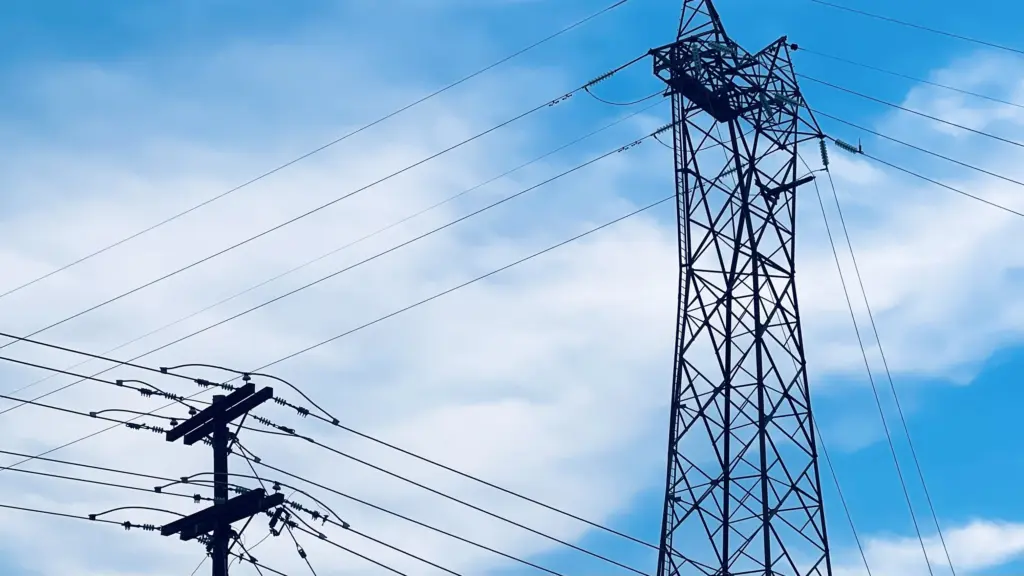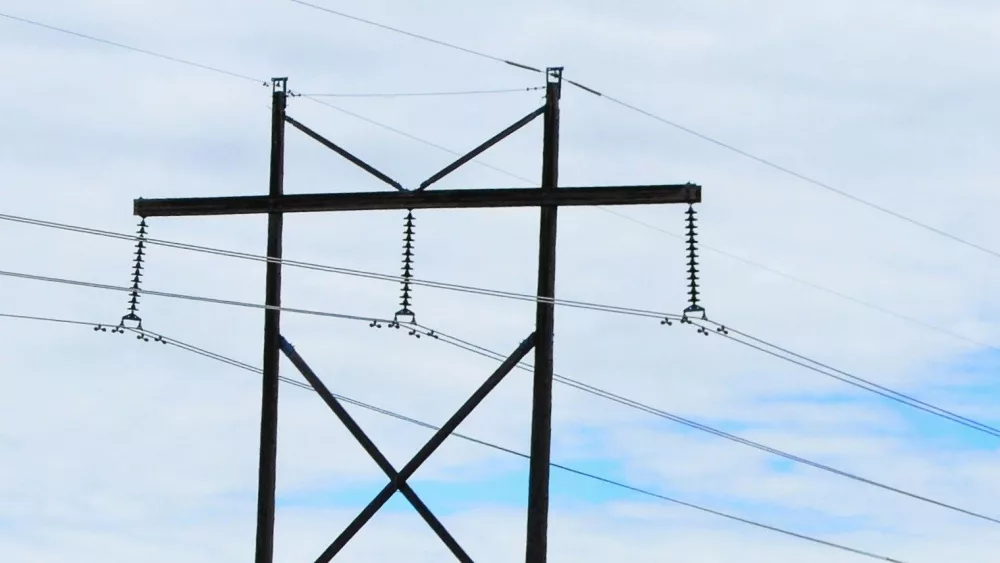BOISE, ID – For years, Western leaders have debated the creation of a regional energy market: a coordinated grid to pool solar power in Arizona, wind in Wyoming, hydro in Washington and battery storage in California.
The shared resources would meet the demands of 11 different states, bolstering utilities’ local power plants with surplus energy from across the region.
With the passage of a landmark new law in California, that market is finally on its way to becoming a reality. Proponents say it has the potential to lower energy costs, make the grid more resilient and speed up the deployment of clean energy.
But the market’s success, experts agree, depends heavily on which states and utilities decide to opt in. As energy issues have become increasingly politicized, it’s uncertain whether Western leaders can buy into a common vision for meeting the region’s power needs.
“As we move toward weather-dependent renewables to run our grid, we’ve got to have a grid that is bigger than a weather pattern,” said California Assemblymember Cottie Petrie-Norris, a Democrat who sponsored the legislation aimed at establishing the new market. “A Western energy market is critical.”
The California measure earned bipartisan support, and leaders in conservative and liberal states alike have long touted the benefits of a region-wide market.
But some skeptics worry about merging the power systems of states with varying climate goals. And some fear the new market could give federal regulators appointed by President Donald Trump an opening to interfere and mandate more fossil fuel-powered plants that can be turned on regardless of the weather.
A bigger market
Across the 11 Western states that straddle or sit west of the Rocky Mountains, 37 separate private and public utilities operate portions of the grid.
This fragmented structure differs from the grid systems in Eastern and Midwestern states, where regional transmission organizations, or RTOs, coordinate and plan for energy needs across vast swaths of the country.
Backers of a Western market argue that a region-wide approach would be much more efficient.
Under the current system, each utility is required by state public utility commissions to build enough power to meet peak energy demands. That could mean building gas plants that only turn on a few times a year during extreme heat waves.
As part of a West-wide market, utilities could manage those high-demand events by importing power from other parts of the region that are generating surplus electricity. Such agreements could also prevent the periodic shutdowns of wind and solar farms when they produce more energy than local utilities can use.
“We could be drawing on the solar resources from the Southwest during the day, and then in the evening the wind resources in Montana and Wyoming are a great benefit,” said Austin Scharff, senior energy policy specialist with the Washington State Department of Commerce. “We have a lot of hydro resources, and we can help make sure the regional grid stays balanced when those are needed.”
Some industry leaders say such trading would allow states to pull in cheap electricity from elsewhere, rather than building expensive new power plants.
“When you have this bigger market, not everybody has to build to their peak in the same way,” said Leah Rubin Shen, managing director with Advanced Energy United, an industry group focused on energy and transportation. “Everybody’s able to share.”
Western states do trade electricity on a bilateral basis between individual utilities. Utilities spanning much of the West also transact through a real-time market that allows them to address pressing short-term demand issues. Some are poised to join a new day-ahead market that will conduct planning based on daily demand and production forecasts.
We’ve got to have a grid that is bigger than a weather pattern.
– California Democratic Assemblymember Cottie Petrie-Norris
But some lawmakers and officials believe the region needs a larger vision that goes beyond moment-by-moment needs, a market that can plan interstate transmission lines and energy projects to serve the whole region in the decades to come.
“We’re facing really rapidly growing energy demand,” said Nevada Assemblymember Howard Watts, a Democrat. “The best way for us to meet that is to effectively move energy all across the Western U.S. The only way we can do that is through an RTO.”
Watts sponsored a bill, enacted in 2021, that requires Nevada to join an RTO by 2030. Colorado also passed a law that year with a 2030 deadline for utilities to join an RTO.
“Any future is better than our status quo, which is 37 separate grids in the West,” said Chris Hansen, a former Democratic senator who sponsored the Colorado legislation. “We can lower costs and provide greater reliability if we’re sharing resources.”
Hansen now serves as CEO of La Plata Electric Association, an electric cooperative in southwestern Colorado.
A new market
The push for a West-wide market had always faced one major hurdle: Any market would likely include the massive geographical footprint and energy supply managed by the California Independent System Operator, or CAISO. As the West’s largest grid operator, CAISO manages the flow of electricity across most of the Golden State. It’s governed by a five-member board appointed by California’s governor, and other states were unlikely to sign up for a market in which they have no representation.
The law passed by California legislators last month allows for a new organization with independent governance from across the region to oversee Western energy markets.
“This legislation is a key reset and has been the largest sticking point in building a regional market,” said Amanda Ormond, managing director of the Western Grid Group, which advocates for a more efficient grid. “This is a primary concern of a lot of folks that has now been solved.”
Blue states hope their clean energy plans withstand collision with Trump
The law sets in motion a yearslong process that will task regional leaders with establishing the organization’s governance and navigating a series of regulatory procedures. The new market could be in place by 2028.
State leaders across the West say the California law is a long-awaited development.
“You get this really good benefit from being able to optimize across a larger footprint than an individual utility can,” said Tim Kowalchik, research director with the Utah Office of Energy Development. “Those resources can play really well together.”
Utah led a study in 2021, collaborating with other Western states, exploring the potential for energy markets in the region. State officials say the research has helped drive the current effort.
“It was fascinating how substantial the benefits were,” said Letha Tawney, chair of the Oregon Public Utility Commission. “The interdependence of the West started to become much more apparent, and it really changed the conversation.”
The study looked at a variety of market options and found that an RTO would have significant benefits, lowering costs for electricity customers and promoting clean energy. Based on the study’s projections, the market would produce roughly $2 billion in gross benefits per year, largely by saving utilities from building extra capacity.
Another study in 2022, conducted by a pair of consulting firms, found that an RTO would create as many as 657,000 permanent jobs and bolster the region’s economy.
While Western leaders say the potential benefits are massive, no states outside of Nevada and Colorado have committed to joining a regional RTO. State leaders say they’ll be watching carefully to see what emerges from the new California law. While the decision on joining the market will largely be left to individual utilities, state regulators can play a major role by directing them to conduct an economic analysis of such a move.
State sovereignty
The push for a regional market has also faced opposition from skeptics who fear it undermines states’ power to set their own energy and climate goals. Some point to Eastern governors’ frustration with PJM Interconnection, the RTO that manages the grid across a swath of the Midwest and Mid-Atlantic.
“It’s very dangerous,” said Jamie Court, president of Consumer Watchdog, a California-based nonprofit advocacy group. “We’re giving up control of our sovereignty. Once a state’s in, it’s not the state that has the control.”
Some experts fear that states with significant coal or gas industries may be hesitant to join a market that could incentivize their utilities to import cheap solar power from elsewhere. On the flip side, some climate advocates in California are wary of plugging into a market that could support coal power from out of state.
“Some states are parochial-minded: ‘This is a California thing, and we don’t want anything to do with California,’” said Vijay Satyal, deputy director of markets and transmission with Western Resource Advocates, a nonprofit climate-focused group. “That one state’s government will not decide how a market will be operated, it’s a seismic shift in the industry.”
Trump’s bid to support coal could cost ratepayers billions, report finds
Backers of an RTO argue that it can incorporate states’ varying energy goals. They point to research showing that the market will support renewable power. But others fear merging fates with coal-heavy states could give federal regulators more leverage to intervene in favor of fossil-fuel power.
Even if Trump is out of office when the market comes online, the regulators he appoints to the Federal Energy Regulatory Commission will still be serving out their terms. Some believe FERC could set rules that require the new market to favor fossil fuel-powered resources.
“When you have a mixed market with a lot of coal plants, it creates opportunities for the Trump administration to rejigger the rules to favor coal,” said Matthew Freedman, renewables attorney with The Utility Reform Network, a California-based consumer advocacy group. “In another reality, this would have sounded like a hysterical concern, but it’s pretty obvious where [Trump’s appointees to the Federal Energy Regulatory Commission] want to go.”
Freedman’s group pushed California lawmakers for protections that would have given states more flexibility to withdraw from the market, while also prohibiting “resource adequacy” mandates that could be used by the feds to prop up coal. While those elements were included in a Senate version of the bill, they were stripped from the Assembly bill that ultimately was passed.
Supporters of the bill say such concerns are overblown, and the new market is structured to avoid the pitfalls facing other RTOs.
“The simple economic fact is that right now clean energy resources are the cheapest in the world,” said Petrie-Norris, the law’s sponsor. “We’re going to see solar displacing dirty fuels rather than the reverse.”
Much depends on convincing states and utilities it’s in their best interests to join the market. The strength-in-numbers advantages of an RTO depend on widespread participation. While many Western leaders have long touted a region-wide market, the opportunity is arising at a time where energy has become a partisan issue.
Meanwhile, the long-awaited market emerging from California is facing new competition from the east. The Southwest Power Pool, an Arkansas-based RTO serving the middle of the country, is expanding its footprint in the West, with several utilities poised to join its day-ahead market.
“Anytime you have two neighboring utilities in different markets, you have seams that create a lot of friction and inefficiency,” said Rubin Shen, with the energy industry group. “Whether or not everybody can come together and be all-in on a full West-wide market, it’s too soon to tell.”
Stateline reporter Alex Brown can be reached at abrown@stateline.org.
Stateline is part of States Newsroom, a nonprofit news network supported by grants and a coalition of donors as a 501c(3) public charity. Stateline maintains editorial independence. Contact Editor Scott S. Greenberger for questions: info@stateline.org.





